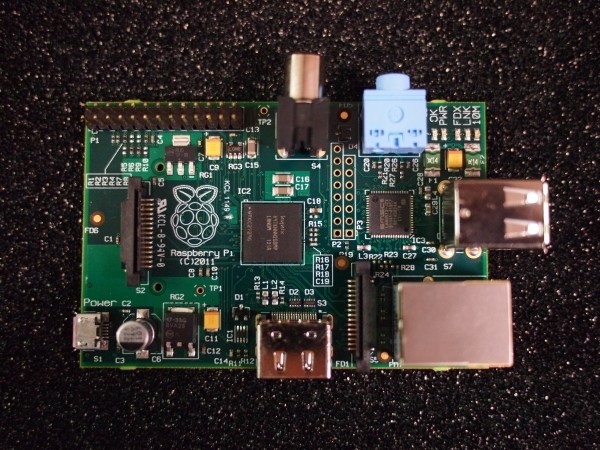A new interview with executive director Eben Upton reveals that the upcoming $25 Raspberry Pi minicomputer offers twice the graphical performance of Apple's iPhone 4S and thoroughly smokes Nvidia's Tegra 2 as well.
"What's really striking is how badly Tegra 2 performs relative even to simple APs using licensed Imagination Technologies (TI and Apple) or ARM Mali (Samsung) graphics" says Upton. "To summarize, BCM2835 has a tile mode architecture - so it kills immediate-mode devices like Tegra on fill-rate - and we've chosen to configure it with a very large amount of shader performance, so it does very well on compute-intensive benchmarks, and should double iPhone 4S performance across a range of content."
The $25 computer features a 700MHz ARM11 SoC, 128MB of SDRAM, a 3.5mm audio jack, USB 2.0 port, HDMI out and DVI out. Wi-Fi will be available via a standard USB dongle and storage is handled via SD card. We've already seen that Raspberry Pi systems are capable of running Quake III at 1920 x 1080 with 4x AA as well as Apple's AirPlay.

We first heard about the Raspberry Pi minicomputer in May 2011 as a project designed to help school children learn about the hardware aspect of how a PC operates. During a visit to Cambridge University in 2006, Upton noticed a distinct drop in skill level with those applying for computer science courses versus the previous decade.
The reason for this, he surmised, was that students in previous years were hobbyist programmers that had learned their craft on hardware like Amigas, MMC Micros and Commodore 64 systems. The most recent incoming students had virtually no programming skills and perhaps just a touch of experience with web design, if that.
Upton compiled a board of trustees and set about developing an ultra low priced computer to spark interest in programming once again. What he didn't expect was the enormous interest from those not into programming. Developing countries are interested in the low-cost machines as are hospitals and museums.
Raspberry Pi is awaiting units to come back from the factory before the initial batch goes on sale, although we expect the first production run to be gobbled up pretty quick.